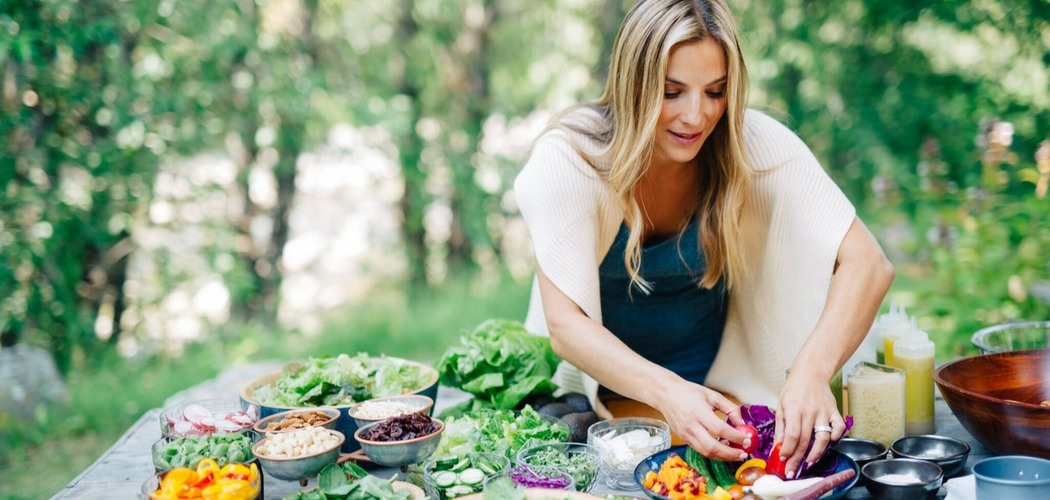Gone are the days where we feel hungry so we pick an apple from a tree. Now, we need to consult books, websites, doctors, and nutritionists to answer one simple question: What should I eat?
Just think about the amount of time you spend thinking about what you’re going to eat. Imagine how many food photos you’ve liked on Instagram in the last week, or how many recipes you pinned on Pinterest.
I recently Googled “Healthy Foods” and got 475,000,000 results. All of the recipes are filed under a variety of categories: Gluten-free, Paleo, Vegetarian, Vegan, Whole30, Weight Watchers, Atkins, and the list goes on.
The industry wants us to believe that eating food these days is complicated … because it means more business.
I’ve been on every “diet” on the planet — the carrot diet, grapefruit diet, cracker diet, and lemonade diet. I’ve been macrobiotic, vegetarian, pescatarian, and paleo. I’ve done juice cleanses and raw-food detoxes.
After a bunch of trial and error, I settled on a naturally gluten-free diet, which basically means I eat loads of veggies, healthy proteins, and good fats. I do indulge in the occasional sweet treat to keep things interesting — oh, how I love a little dark chocolate and wine!
The Diet Drama
When you boil right down to it, most decent weight loss and diet programs have a few things in common. At least they agree on a few things! Keep these diet do’s in mind when you structure and create an eating plan that works for you:
- Limit your options. Most of us are more comfortable with a “plan” to follow to keep it simple.
- Base your meals around fresh produce.
- Limit sugar intake to a once-in-a-while treat.
- Reduce consumption of processed, packaged items.
- Incorporate healthy fats (almost no good diet these days advocates for a super low-fat diet)
- Limit simple carbohydrate conceptions (bread, pasta, etc)
Despite these similarities, different diets argue over protein sources (and amounts), fat sources (and amounts), vegetarian or non-vegetarian based diets, and a grain-full or grain-free approach.
There Is No One-Size-Fits-All Diet
The truth is, everyone’s bodies and lifestyles are different. Rather than making your life fit around a diet plan that wasn’t designed with you in mind, figure out what makes you feel great. Here are a few tips that can help you adopt a more flexible approach to food:
1. Figure out what types of foods make you feel bloated and fatigued. This is not going to be the same for everyone. While I don’t do so well with grains, maybe your body can handle them just fine. Figure out what doesn’t work and then cut them out of your regular diet.
2. Fill your plate with real foods—fresh veggies, lean proteins, and fruits. I was recently interviewed by the host of AfterBuzz TV and asked about my tricks for making veggies more delicious. She specifically wanted to know what I do with Brussels sprouts. My advice? While you can jazz them up, if you don’t like a certain healthy food then you shouldn’t force yourself to eat it. There are plenty of other healthy options out there!
3. Figure out how far you can veer off the healthy eating course without falling into pizza and ice cream forever land. I personally follow the 90/10 rule—I fill my plate with real foods 90% of the time and allow myself to indulge in healthified treats the other 10% of the time. What fun is it if you never get to bite into an ooey-gooey cookie from time-to-time?
4. Don’t view the way you eat as a diet. Rather, create a healthy and flexible lifestyle.
5. Make your food fit your lifestyle, not the other way around!
